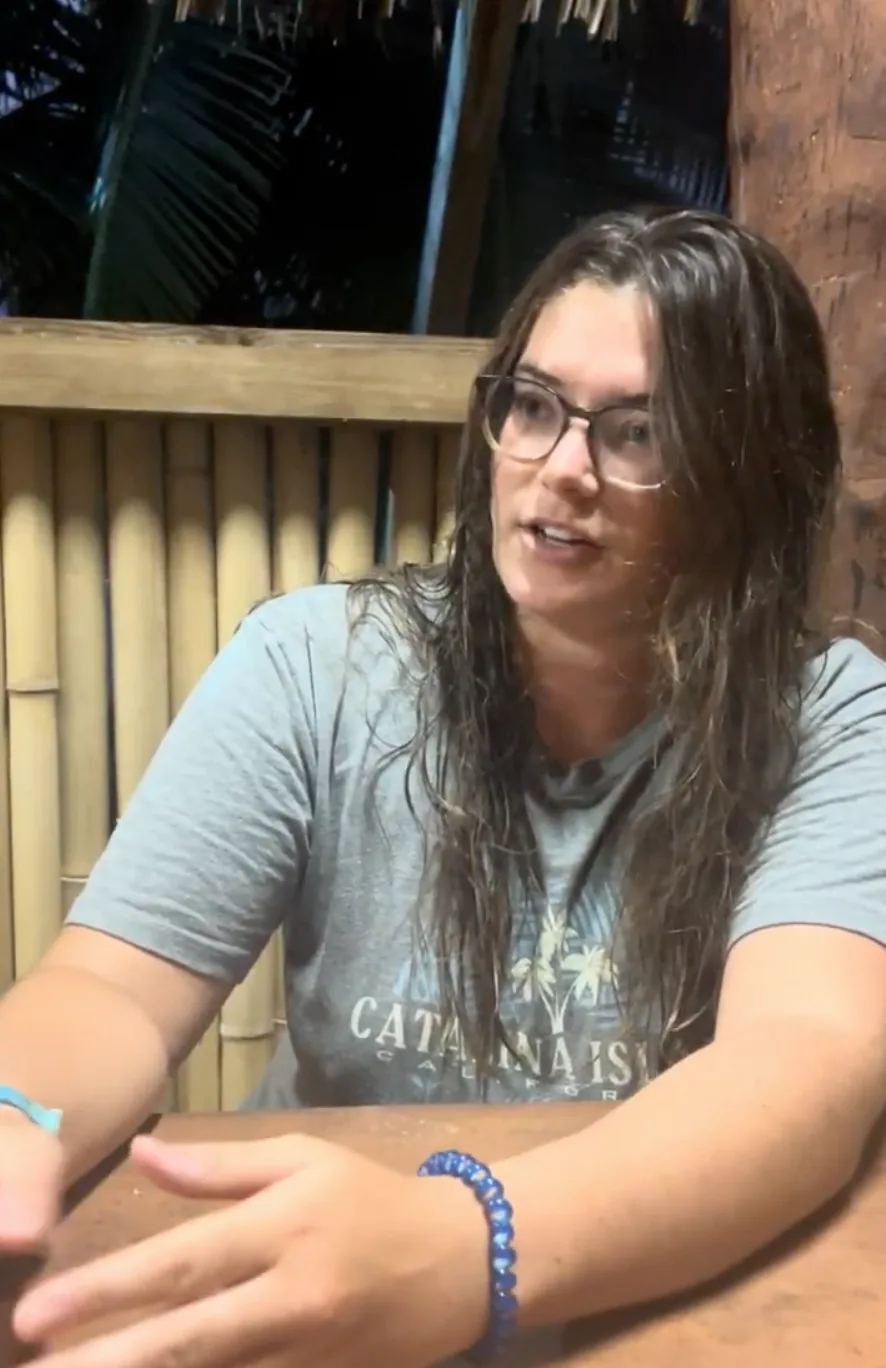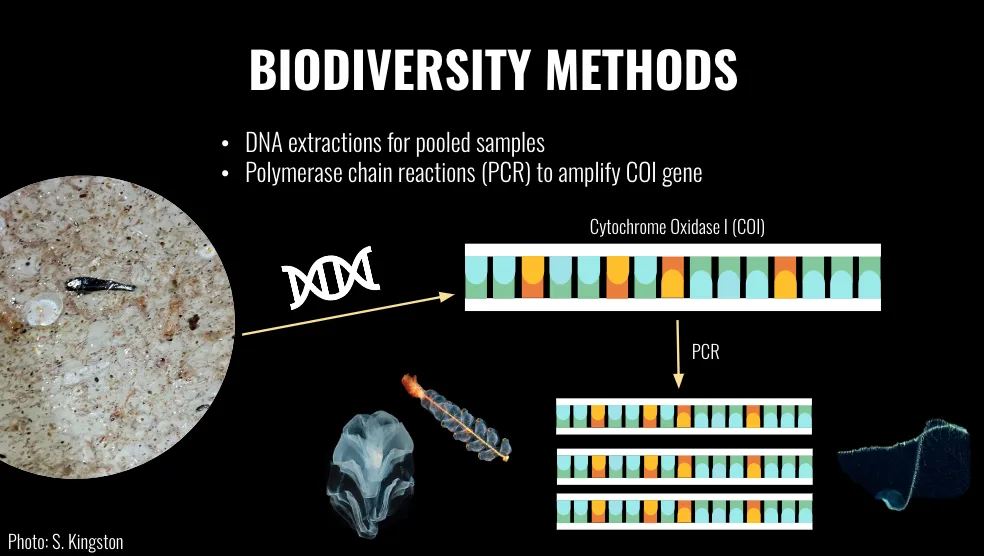Programs Blog
Olivia on DNA Research out at Sea

Date: May 31, 2025
Time: 0730
Location: Gump Marine Station, Mo‘orea
Weather: 76˚ F, 5 kts easterly
This is an excerpt from an interview with Olivia Hines, U. of San Diego, conducted a couple days ago.
Will you tell us a moment during the voyage when you realized you were really learning something.
There were so many, about science, myself, sailing. One moment when I really realized I was learning something and applying a skill that we had gained in roughly the first two weeks of “learning the ropes” was the first time that I was successfully on the helm unsupervised. The mate has to stay on the quarterdeck or in the chart house. This was Dawn Watch. Rocky, the first mate, went down to do charting, and we had thought we’d seen some lightning so he went down to the charthouse to check everything on the radar. So I was just on the quarterdeck all by myself with some amazing stars—for about ten minutes? He would yell up every once in a while to make sure everything was okay, and I would yell down when I was correcting. But that was the first time I felt fully comfortable at the helm. I thought, I’m fully responsible for the thirty-three other souls on board. And I’m confident that I’m able to keep us on course, headed toward our destination.
How is your science project going?
My project is going really well. I just finished editing my slides for our upcoming symposium tomorrow. I was really excited going into this project because in coastal San Diego I had done phytoplankton response to sea surface temperature and salinity, so I was really excited to apply that to the open ocean environment, and to a different group of organisms—zooplankton instead of phytoplankton. The siphonophore (a sort of colonial sea jelly) project was my first choice. I had never done any of this genomic testing before, so that was really exciting, to be able to apply some of my R (a statistical tool) knowledge to what we’re doing with all of the NMDS data (a statistical technique), and things like that. And Georgia’s been great at R, as well. So I’m really excited for the symposium tomorrow.
When you say “genomic testing” that means…
The genomic that we’re looking at—we’re specifically doing metabarcoding of a specific gene. We’re looking at the mitochondrial-based DNA C01 gene, which is a significant gene in that pretty much every organism alive has it. So it’s really easy to see commonalities and differences across species just in that gene: you can differentiate this blob of goop over here from a neuston tow that we think has a siphonophore from a different neuston tow where there definitely is a siphonophore that we were able to morphologically identify.
How did you do all this?
Seamans is actually really unique in that it has all of these tools on board. We were using DNA extraction. We had DNA shield—which is essentially soapy water, and then we add in enzymes that break down specific parts of the DNA, but protect the C01 gene and amplify it. So then we get a ton of copies, and it’s really easy to read and pull out. We had the PCR, which is polymerase chain reaction, which is adding those enzymes. We had DNA sequencing, which is amazing to be able to do on board. It’s kind of a mini-super computer that runs millions and millions of copies of genes. And then lastly we have a NanoDrop on board. Which is kind of just saying this DNA we extracted is good or bad for being able to get good sequencing out of it. So it’s really unique for a sailing vessel specifically to have all of that—and all of the sea water processing on board as well.


Recent Posts from the Ships
- Ocean Classroom 2024-A collaborative high school program with Proctor Academy
- Collaborations and Long-term Commitments: SEA’s Caribbean Reef Program Sets a Course for Coastal Programs that Compliment Shipboard Experiences.
- Sea Education Association students prepare for life underway using state of the art nautical simulation from Wartsila Corporation.
- SEA Writer 2022, Magazines From the Summer SEA Quest Students
- Technology@SEA: Upgrades Allow Insight into Ocean Depths
Programs
- Gap Year
- Ocean Exploration
- High School
- Science at SEA
- SEA Expedition
- SEAScape
- Pre-College
- Proctor Ocean Classroom
- Protecting the Phoenix Islands
- SPICE
- Stanford@SEA
- Undergraduate
- Climate and Society
- Climate Change and Coastal Resilience
- Coral Reef Conservation
- Marine Biodiversity and Conservation
- MBL
- Ocean Exploration: Plastics
- Ocean Policy: Marine Protected Areas
- Oceans and Climate
- Pacific Reef Expedition
- The Global Ocean: Hawai'i
- The Global Ocean: New Zealand